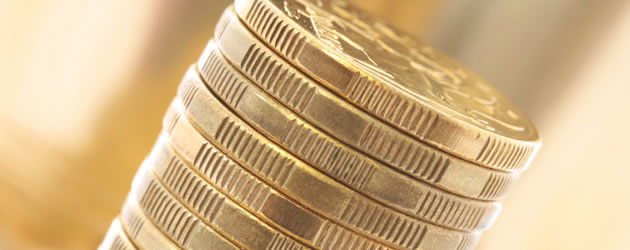The Euro (EUR) has risen by 0.3% against the Australian Dollar (EUR/AUD) today, just one of a number of respectable advances for the common currency.
Possible for Undoing of Euro’s Gains with Pessimistic German CPIs Incoming
The Euro (EUR) has advanced against the Australian Dollar (EUR/AUD) today mainly due to the Australian Roy Morgan Weekly Consumer Confidence Index to the end of September 27th showing a drop in confidence from 114.5 points to 110.6.
In the near-future, however, the single currency may be in for a spill as the German CPIs for September are due in and forecasts have been negative across the board.
Earlier…
The Euro (EUR) has risen by 0.9% against the Australian Dollar (EUR/AUD) today, just one of a number of unusual gains for the common currency on an otherwise disheartening day.
US Fed Speeches to Dominate Pairing Once Again as EUR/AUD Poised to Rise
As with last week, the majority of major results belong to the US this week. As the Fed speeches certainly seem set to voice optimism towards a US interest rate hike occurring in October or December, it is likely that the US Dollar (USD) will be granted continuing support this week, which will conversely continually diminish the prospects of an ‘Aussie’ (AUD) rally, in turn benefitting the Euro (EUR).
Earlier…
The Euro to Australian Dollar (EUR/AUD) exchange rate has risen marginally today, but elsewhere, the two currencies have failed to make much headway thanks to a data deficit.
EUR/AUD Exchange Rate News: Gathering Storm Clouds over Germany and Spain dampen Single Currency Confidence
The Euro (EUR) edged higher against the Australian Dollar (EUR/AUD) today, although this minor advance has not been repeated elsewhere. Against the Pound Sterling (EUR/GBP), the Euro has fallen by -0.2%, while a 0.3% drop against the Japanese Yen (EUR/JPY) has also been seen.
The main reasons for the waning confidence in the Euro have been continuing negative speculation relating to the Volkswagen emissions scandal and the possible separation of one of Spain’s regions, Catalonia.
Although VW admitted to falsifying diesel emissions data to break into the US automobile market, governments and agencies further afield have expressed their doubts over the extent of the ‘defeat devices’ in VW vehicles; in Switzerland, for example, sales of VW vehicles have been temporarily banned, pending further investigation. As automobile manufacturing is one of Germany’s key industries, the future impact of VW’s massive repayment due for misinformation and even potential closure has weighed heavily on investors in the common currency.
Also in yet more potentially negative Eurozone news, the Spanish government has had cause for alarm recently as separatist parties have won the majority of the vote in the Catalonian parliamentary elections, bringing the prospect of a regional independence referendum vote to the fore.
‘Aussie’ has Mixed Performance in AUD/EUR Pairing as Turnbull’s Grand Reception fades away
The Australian Dollar (AUD) has fallen against the Euro (AUD/EUR) today, trending narrowly. Against other rivals, the ‘Aussie’ has dropped by -0.2% against the Chinese Yuan (AUD/CNY) and by -0.3% against the Pound Sterling (AUD/GBP), although a gain of 0.6% against the New Zealand Dollar (AUD/NZD) has also been recorded.
The Australian Dollar has been beset by a data shortage recently, which has left speculators with only the tough economic task faced by new Prime Minister Malcolm Turnbull as a point of reference. As an economically-minded PM, Turnbull has to revitalise an economy where the biggest contributor, the mining industry, is flagging due to the commodity crash and a suitable replacement sector has yet to be found.
Global asset manager AllianceBernstein’s Senior Economist Guy Bruten has said: ‘In our view, the GDP figures don’t really reflect what’s been going on in the Australian economy since 2011. If you look a little deeper than GDP allows you to, however, the picture looks a lot more serious.’
Bruten has advocated using the Net National Disposable Income Per Capita (NNDIPC) data as a replacement for GDP, stating that using these results, ‘Since the end of 2011, the measure of living standards has been going backwards at a rate of 1.4% a year – a reflection, largely, of the decline in the terms of trade.’
EUR/AUD Exchange Rate Forecast: US Results to determine Leader in Pairing ahead of Tomorrow’s Releases
Neither the Eurozone nor Australia have any particularly notable announcements due for the rest of the day, therefore before tomorrow’s Euro (EUR) and ‘Aussie’-centric (AUD) data, US announcements such as the Core Personal Consumption Expenditure for August and Spending figures for the same month are likely to push the ‘Aussie’ up or down, which will in turn affect its standing in the EUR/AUD exchange rate.
Current EUR, AUD Exchange Rates
The Euro to Australian Dollar (EUR/AUD) exchange rate was trending in the region of 1.5939 and the Australian Dollar to Euro (AUD/EUR) exchange rate was trending in the region of 0.6277 today.



